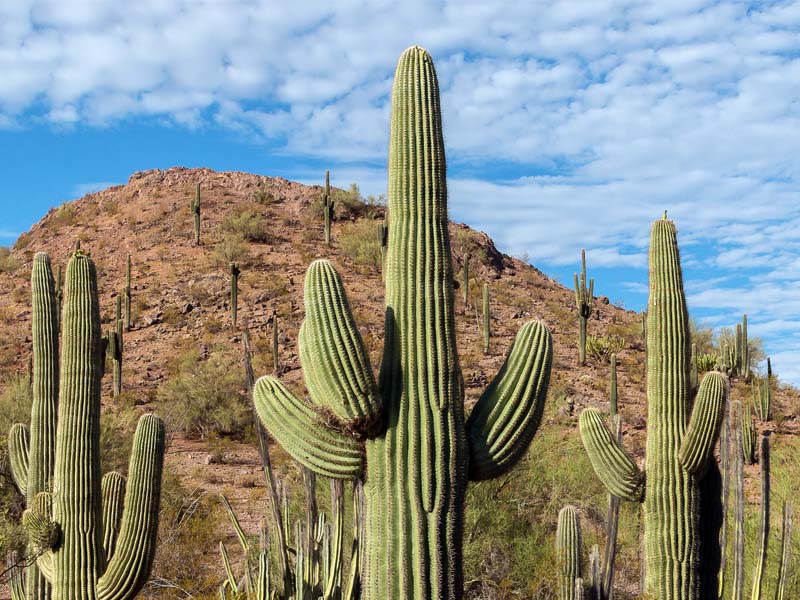Coral reefs are known to be endangered. Images of colorless coral, vacant of living creatures, paired with pleas to help preserve the reefs, have been seen for years. In October 2015, the International Union for Conservation of Nature (IUCN) released the Red List of Threatened Species. Once again, coral reefs appeared in the top five; but it was accompanied by a group of organisms new to the list. Cactus are now ranked as the fifth most-threatened group of living things in the world. The IUCN’s in depth assessment found 31% of the 1,478 evaluated species of cactus are at risk of extinction.
Habitat loss is the number-one threat for most living organisms. While this is a threat to some species, the main reason cactus are on the Red List is illegal trade and poaching. People find rare and endangered species of cactus in the wild and take them for their own collections or to sell to the highest bidder. There is an active and thriving cactus black market, driven by high prices and the desire to obtain wild plants instead of purchasing greenhouse-grown cactus.
“It is difficult for people to think that any kind of plant is so valuable that it would put them close to extinction,” says Dr. Kimberlie McCue, senior director of Desert Horticulture & Conservation. “Collectors are an interesting phenomenon. There are casual collectors, and then there are passionate and obsessive collectors who will go to any length to add a cactus to their collection.”
Cactus are a critical component to the ecosystems of the New World. Many animals depend on them for survival, and they are widely used by people for food and medicine.
In addition to assembling the Red List, IUCN finds partners throughout the world to help conserve threatened species. In November 2015, Desert Botanical Garden became the host institute for the Cactus and Succulent Specialist Group. This designation positions the Garden to lead the world efforts of cactus conservation.
“What this distinction has done is given a further importance to the Garden’s work and elevated the critical nature of what we do,” explains McCue. “We have the capacity to do the ground work, we have been doing research on conservation for many years and our current research team works on conservation efforts in the Americas, the Caribbean and South Africa.”
The first priority of the Cactus and Succulent Specialist Group is to design a strategy for conserving cactus globally. The plan will contain elements to protect the most at-risk species and conserve the biodiversity of the planet. The Garden has been at the forefront of cactus conservation since opening in 1939. Being the host institute of this specialty group will allow the Garden to lead the development and implementation of this effort.
Cactus conservation is not limited to professionals; anyone can participate in the cause. Being aware of the urgency and sharing it with others is the most important step. In addition, purchasing cactus from a reputable source will ensure that the plants were obtained legally. Many native plants in Arizona are protected against removal from any land by law. The Arizona Department of Agriculture and landowners must give permission and a permit for removal. If plants were legally removed, a salvage tag can be provided to the customer.
With cactus ever-present in Arizona, cactus conservation may seem irrelevant. But with the risk of extinction looming, our conservation efforts need to be prioritized in getting cactus off of the RED list.
